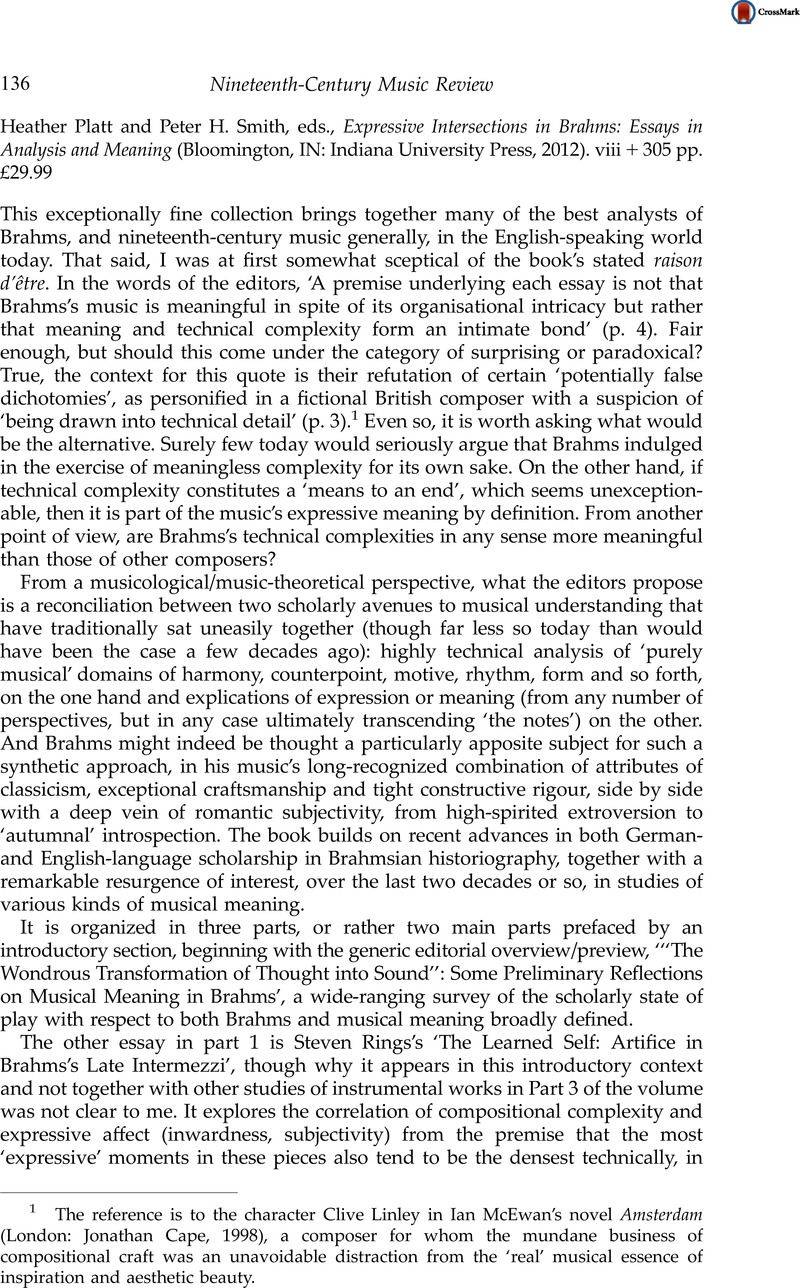No CrossRef data available.
Article contents
Heather Platt and Peter H. Smith, eds., Expressive Intersections in Brahms: Essays in Analysis and Meaning (Bloomington, IN:Indiana University Press, 2012). viii + 305 pp. £29.99
Published online by Cambridge University Press: 17 June 2015
Abstract

- Type
- Book Reviews
- Information
- Copyright
- Copyright © Cambridge University Press 2015
References
1 The reference is to the character Clive Linley in Ian McEwan's novel Amsterdam (London: Jonathan Cape, 1998), a composer for whom the mundane business of compositional craft was an unavoidable distraction from the ‘real’ musical essence of inspiration and aesthetic beauty.
2 Max Klinger (1857–1920) was a painter, sculptor, printmaker and amateur pianist. The artwork of the Fantasy consists of original etchings, engravings and lithographs, illustrating five songs (‘Alte Liebe’, Op. 72, No. 1, ‘Sehnsucht’, Op. 49, No. 3, ‘Am Sonntag Morgen’, Op. 49, No. 1, ‘Feldeinsamkeit’, Op. 86, No. 2 and ‘Kein Haus, keine Heimat’, Op. 94, No. 5) as well as the Schicksalslied, Op. 54. Klinger sent the Fantasy to Brahms, who was evidently very enthusiastic about it, and went on to dedicate the Vier ernste Gesänge, Op. 121 (1896), to Klinger (p. 53).
4 Backfisch was a colloquial term for ‘girls between the ages of fourteen and seventeen … transitional years between the relative freedoms of childhood and the more constrained roles of wife and mother’ (p. 89). The analogy is to ‘fish that are large enough to be caught but so small that they need to be baked rather than fried’ (p. 107, n. 24).
5 The Gesang der Parzen, Op. 89 (1882) is a setting of Iphigenie's monologue from Goethe's Iphigenie auf Tauris, in which she recalls ‘her nurse singing a song in which the Fates sing about the gods, and a narrator – possibly Iphigenie herself – concludes by commenting on the Fates’ song and on the aged exile listening to it’ (p. 113).
6 See Hepokoski, James and Darcy, Warren, Elements of Sonata Theory: Norms, Types and Deformations in the Late-Eighteenth-Century Sonata (New York: Oxford University Press, 2006)CrossRefGoogle Scholar.




